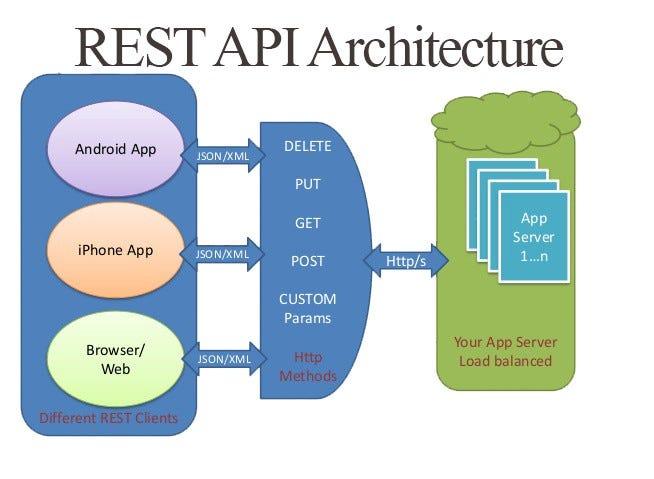In the modern landscape of software development, the ability to create and maintain robust, efficient, and scalable APIs is vital for fostering interoperability between applications and services. Representational State Transfer (REST) is one of the most widely adopted architectural styles for building web services, offering a lightweight means of communicating over the HTTP protocol. This article presents a comprehensive step-by-step guide to building a RESTful API effectively, covering key principles such as resource representation, stateless interactions, and proper usage of HTTP methods. By following this guide, developers will gain insights into best practices for API design, implementation, and documentation, ensuring the created APIs are user-friendly, maintainable, and aligned with industry standards. Whether you are a novice seeking foundational knowledge or an experienced developer looking to refine your skills, this resource aims to equip you with the tools necessary to create successful RESTful interfaces.
Table of Contents
- Understanding RESTful Principles and Practices
- Designing a Robust API Architecture
- Implementing Authentication and Security Measures
- Testing and Documenting Your API for Efficiency
- Key Takeaways
Understanding RESTful Principles and Practices
At the core of building a RESTful API lies an understanding of the fundamental principles that govern its architecture. REST, which stands for Representational State Transfer, emphasizes a stateless communication protocol over HTTP. This involves the use of resources, which are identified through URIs, allowing clients to interact with the API over standard HTTP methods, such as GET, POST, PUT, and DELETE. Each method has a specific purpose and semantic meaning, which contributes to a clear and predictable API design:
- GET: Retrieve resource representations.
- POST: Create new resources.
- PUT: Update existing resources or create new ones if they don’t exist.
- DELETE: Remove resources from the server.
Moreover, the principles of REST encourage stateless interactions; every request from a client must contain all the information needed to understand and process that request. This leads to improved scalability and enhanced performance. Caching is another significant aspect of REST, allowing clients to store responses and reduce the need for repeated server access, thus optimizing resource utilization. Implementing the Uniform Interface constraint simplifies the architecture and decouples client and server interactions, promoting interoperability across platforms. The following table summarizes the key RESTful concepts:
| REST Principle | Description |
|---|---|
| Statelessness | Each request is independent; no session information is stored on the server. |
| Resource-based | APIs are structured around resources, each identified by a URI. |
| Uniform Interface | Simplifies and decouples architecture by standardizing communication. |
| Cachable | Responses can be cached to improve efficiency and reduce load times. |
Designing a Robust API Architecture
Creating a solid API architecture is a crucial step in ensuring the reliability and scalability of your application. To begin with, consider employing the REST (Representational State Transfer) architectural style, which promotes statelessness and uses standard HTTP methods (GET, POST, PUT, DELETE) to interact with resources. This approach not only simplifies web services but also aligns with the existing web standards, making it easier for developers to understand and integrate your API. The key principles include:
- Stateless Operations: Each API call must contain all the information needed to understand the request.
- Uniform Interface: Consistent resource identification through URIs enhances discoverability.
- Resource Representation: Use representations like JSON or XML to convey resource state.
Another vital aspect is versioning your API. As your application evolves, defining clear versioning strategies helps maintain backward compatibility for existing users while allowing you to introduce new features. Consider the following approaches to API versioning:
| Versioning Method | Description |
|---|---|
| URL Versioning | Incorporate the version number in the URL (e.g., /api/v1/products). |
| Query Parameter Versioning | Include the version as a query parameter (e.g., /api/products?version=1). |
| Header Versioning | Send the version number in HTTP headers (e.g., X-API-Version). |
Implementing Authentication and Security Measures
When developing a RESTful API, implementing robust authentication and security measures is essential to protect sensitive data and ensure only authorized users access the system. The most common methods for API authentication include Basic Authentication, OAuth 2.0, and JWT (JSON Web Tokens). Each method has its strengths and considerations:
| Method | Advantages | Considerations |
|---|---|---|
| Basic Authentication |
|
|
| OAuth 2.0 |
|
|
| JWT |
|
|
In addition to authentication, implementing security measures such as data validation, rate limiting, and logging is crucial for safeguarding your API. For instance, data validation ensures that incoming requests meet expected formats, reducing vulnerabilities to injections and malformed data. Rate limiting helps to mitigate the risks of abuse and denial-of-service attacks by restricting the number of requests a user can send within a specific time frame. maintaining comprehensive logging practices allows developers to monitor API usage and identify potential threats quickly. Incorporating these strategies will bolster the security posture of your RESTful API effectively.
Testing and Documenting Your API for Efficiency
Testing and documenting your API is crucial for ensuring its efficiency and reliability. When it comes to testing, consider implementing the following practices to streamline your workflow and minimize errors:
- Unit Testing: Ensure that individual components function as expected.
- Integration Testing: Validate interactions between different components.
- Load Testing: Simulate user traffic to assess API performance under stress.
- Automated Testing: Utilize tools like Postman or Swagger to automate test cases.
Documentation serves as the blueprint of your API, facilitating easier adoption and usage. Essential documentation components include:
- Endpoint Descriptions: Clearly outline available endpoints and associated methods.
- Sample Requests and Responses: Provide examples to illustrate data exchange.
- Error Codes and Messages: Document possible errors and their meanings to assist users in troubleshooting.
| Error Code | Description |
|---|---|
| 400 | Bad Request – The server cannot process the request due to client error. |
| 401 | Unauthorized – Authentication is required and has failed or has not yet been provided. |
| 404 | Not Found – The requested resource could not be found. |
| 500 | Internal Server Error – A generic error occurred on the server. |
Key Takeaways
building a RESTful API effectively requires a structured approach that encompasses planning, design, implementation, and testing. By following the comprehensive steps outlined in this guide, you can ensure that your API is not only functional but also scalable, secure, and maintainable. Remember the importance of adhering to best practices such as using proper HTTP methods, organizing routes logically, and implementing robust error handling. As technologies and best practices continue to evolve, staying updated will enhance your API’s performance and usability. Whether you are developing APIs for personal projects or enterprise-level applications, a solid understanding of RESTful principles will ultimately lead to more efficient integration and a better experience for your users. With persistence and attention to detail, you can create APIs that stand the test of time in an ever-changing technological landscape.






